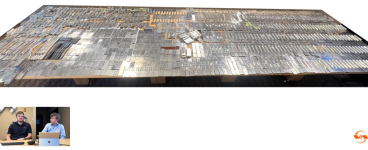An LCP crack should not progress past it's original length. If it does, it should be treated as any other (fatigue) crack and stop drilled.Also, certainly communicate with Vans about the finding. After what I saw at the factory, I think if you find one of these you should go by a lottery ticket, as I don't think it should occur in our lifetime.
I'm also not so certain that cracks are caused by lack of deburring. As a DAR I have seen more than a few metal airplanes that weren't deburred at all, and they aren't seeing any problems. I think if a fatigue crack is going to occur, it's going to occure whether or not the hole was deburred. Perhaps it happens faster, I don't know.
Again, continue with best practices, and we will all keep inspecting for cracks, as we have always done. Some are corrected by stop drilling, and others may need doublers. It happens in both the certified world and our amateur-built world.
Vic
I think I like your answer but just to make sure I got it let me boil it down to two prescriptive statements.
Case A: Crack only at the ridge of the dimple during inspection ==> ignore
Case B: Crack through the base of the dimple ==> follow standard crack mitigation techniques
Does that describe the essence of your comment above or am I misrepresenting/missing something ?
If above doesn't capture it which inspection procedure for an airplane you didn't build and don't know the LCP status of would you suggest.
Oliver





